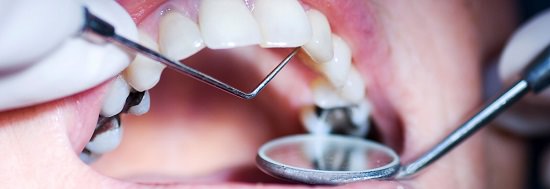Learn all about Occlusal Cavity and other types of tooth cavities along with the reasons and treatment options below!
A tooth cavity occurs when one or more portions of your teeth have been affected by dental caries. These carious lesions result in chalky white spots on the surfaces of the teeth. If not treated, these white spots turn brown or black over time, which is the earliest sign of a cavity.
Teeth are comprised of 4 layers- Enamel, Dentin, Pulp, and Cementum. Each of these layers plays a vital role in the well-being of your pearly whites.
1. Enamel
It is the outermost and hardest part of the tooth. It’s what we see when we smile and the part of the tooth we brush. The primary purpose of enamel is to protect the teeth from acids and bacteria and is devoid of regenerative cells.
2. Dentin
It is present right beneath the enamel and has a yellowish hue. It occupies the major part of the tooth. If the enamel wears away due to various circumstances, the dentin gets exposed, and you experience tooth sensitivity to cold and hot substances. It is due to its porous surface texture, which allows materials to affect the nerve endings.
3. Pulp
Pulp is present underneath the dentin and is mainly composed of blood vessels and nerves. If the tooth decay reaches the pulp, you will experience immense pain.
4. Cementum
It is the innermost portion of the tooth that covers the teeth’ roots and fuses them to the jawbone.
Types of Cavities
1. Occlusal Cavity or Smooth-Surface Cavities

The occlusal surface of the tooth is a complex network of pits, fissures, and ridges that provides the perfect niche for the accumulation of bacteria. The tooth tends to demineralize due to oral bacteria’s acid production, leading to the formation of the occlusal cavity. It usually occurs in molars.
2. Pit and Fissure Cavity
It affects the deep grooves present on the molars. It can be prevented by the application of sealant by the dentist.
3. Root Cavity
Root cavities develop on the root surface of the tooth, usually beneath the gums. It occurs when the acid produced by the bacteria affects the cementum.
Causes of Cavities
1. Dietary Habits
Increased consumption of food or drinks high in sugar, white starches like bread, pasta, chips can result in cavities over time.
2. Poor Oral Hygiene
Not brushing twice a day and maintaining proper hygiene can be one of the main reasons for developing caries.
3. Medications
Medications like antihistamines, antidepressants, pain medication, sedatives, blood pressure medications can also develop cavities over time.
4. Smoking
Tobacco use can increase the susceptibility of teeth to caries. Besides, dry mouth can also develop cavities.
Symptoms of a Cavity
- Sensitivity when consuming hot/cold food or beverages
- Pain on chewing
- Foul taste
- Bad breath
- Dark spots on the teeth
- Food impaction
- Small holes on the tooth surface
- Swelling of gums.
Treatment
Regular dental visits can identify cavities and other dental issues before they can cause trouble and lead to serious complications. The earlier you seek treatment, the chances of preventing the progression of tooth decay is higher. The proper treatment plan depends on the severity of the cavity, which your dentist best assesses.
Fluoride Application
It is available in liquid, gel, foam, or as a varnish. It is advisable to get topical fluoride application to reduce the incidence of dental caries.
The application can treat pit and fissure cavities of sealants. It is a thin protective coating placed on the tooth’s surface to prevent the progression of caries.
For moderate cavities, the ideal treatment is to get a filling done. It is when the dentist completely removes the affected tooth structure with dental drills and restores it with the appropriate filling material to restore the strength of the tooth.
If the cavity has affected the pulp tissue, it will require root canal treatment followed by a custom fit crown. Otherwise, when the tooth is severely decayed and cannot be restored, it has to be extracted, followed by a bridge or an implant.
Prevention
Avoid Sugary foods and drinks, and consume more water. Maintain proper oral hygiene and floss your teeth every night. Moreover, regularly visit your dentist to rule out the possibility of severe damage.



